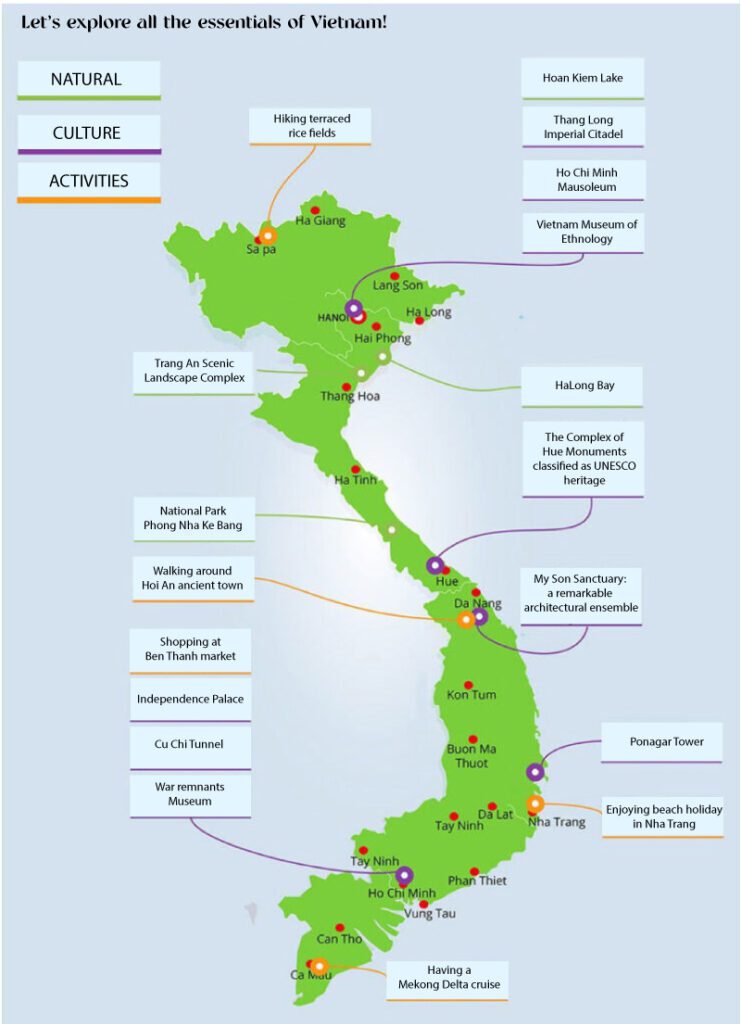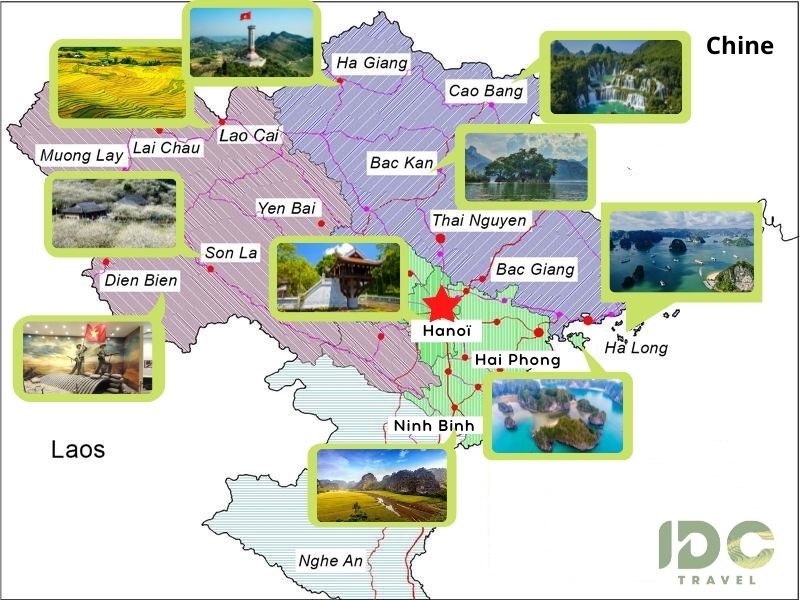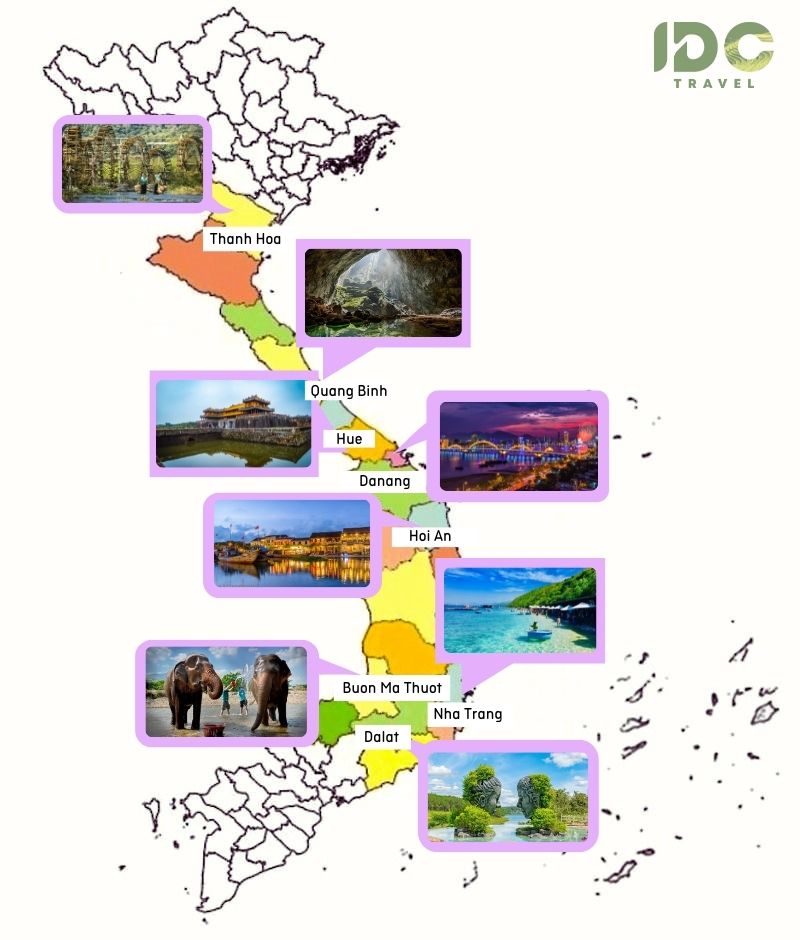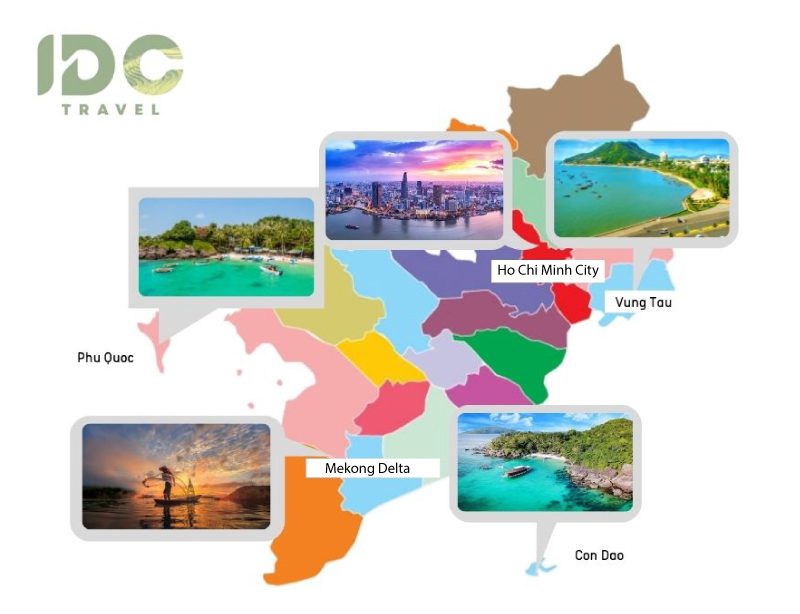To plan a Vietnam tour , you must first have the right information. The travel map below contains all the information you will need for your trip and helps you plan a great itinerary for your stay in Vietnam. For the outsider, it may be hard to believe that this country is made up of many different parts, each with its own climate and way of life. It has a lot of commonalities that basically make it all one country.
Indeed, Vietnam is a long and narrow country, some travelers may have difficulty preparing for their trip to Vietnam. That’s why our general tourist map of Vietnam is designed to provide you with information about the most interesting destinations.
Vietnam is located on the Indochina Peninsula in Southeast Asia and shares borders with Laos, Cambodia, China. It is bordered by the Gulf of Tonkin, and the East Sea and the Gulf of Thailand. The territory has an area of 331,000 km2 and includes 3,260 km of maritime border and 4,200 km2 of territorial waters.
Vietnam is known to have a tropical monsoon-influenced climate. During the same period of the year, you can experience significant climate changes from north to south, 4 seasons in the north and 2 seasons (dry and rainy) in the center and south. We recommend that you pay attention to good weather and good deals when planning a Vietnam tour.

Vietnam Tourist Map
Vietnam has a lot to offer and can be an incredible destination thanks to its lush landscapes, culture and endless variety. If you make the trip, you’ll want to explore the mountains of the northern region, feel the heat of the central desert areas, or relax on some of the tropical seas or islands in the South.
Ha Long Bay is a must-see with its deep history, legends and natural beauty. Immersive tours in this UNESCO World Heritage Site are available for those who want a truly unforgettable adventure. A visit to the ancient citadel will take you back in time. Then discover the life of silk villages, forgotten temples, organic farms and floating markets. Discover breathtaking landscapes: waterfalls, mountain ranges, oceans and fine sands, many craft villages,…
Vietnam’s location makes it a popular tourist destination, and this map provides various details on some of the country’s most popular stops. You can find information about Hanoi, Ho Chi Minh City and many other popular destinations.
Northern Vietnam can be divided into two parts: the northeast and the northwest. This region is located in a temperate climate with four seasons, where it can be very hot in summer and very cold in winter, as the temperature can drop to 0 degrees Celsius in mountainous areas. Keep in mind that there can be typhoons between July and September in the northern highlands, so be careful if you want to travel to Sapa or Ha Giang during this time.

Northern Vietnam tourist map
Northern Vietnam is a dazzling land of natural wonders waiting to be explored. The natural beauty and cultural heritage of the country are impressive and unforgettable. From rice terraces in the plains to towering mountains in the north, turquoise islands and beautiful hill tribes, this region has something for everyone. During your trip to North Vietnam , you can participate in various activities that will help you learn more about the culture and history. You will also have the opportunity to see the architectural marvels of a country that has been around for a long time.
Destinations not to be missed in North Vietnam area: Hanoi, Halong Bay, Sapa, Ninh Binh, Mai Chau and Ha Giang.
Most of the country’s minority tribes live in the northern region. The Northeast is made up of these provinces: Tuyen Quang, Thai Nguyen, Phu Tho, Quang Ninh, Ha Giang and Cao Bang, Bac Kan, Bac Giang, Hanoi, Hai Phong.
The Northwest Vietnam includes provinces such as Son La, Lai Chau, Yen Bai, Hoa Binh, Lao Cai and Dien Bien.
Central Vietnam has a beautiful coastline and there are two seasons: the rainy season and the dry season. The best time for your seaside stay would be from September to March.
In central Vietnam, west of a narrow coastal strip and east of a mountain range, are the Central Highlands, including Da Lat and Buon Ma Thuot.

Central Vietnam map
Da Nang is the economic and cultural center of this region. Hoi An which has French period architecture is just a bit north of Da Nang. If you are planning a trip to central Vietnam , definitely visit these two places. Moreover, you can travel to Hue to see the ancient temples. You can also go to Mui Ne and explore the vast beaches. There are many other places to visit like Da Lat which has lush vegetation and hills.
The Central Highlands (Tay Nguyen in Vietnamese) is a strange and backward region in Vietnam, little known to foreigners. This region includes 5 provinces: Kon Tum, Dak Lak, Gia Lai, Dak Nong and Lam Dong. One of the coolest places to explore in Vietnam is Buon Ma Thuot. It is the biggest coffee producing region in Vietnam and and it is sure that you will get the best coffee when you visit this place.
Southern Vietnam enjoys an average of 26 to 28 degrees Celsius all year round and has only two seasons: the rainy season and the dry season. It will rain for about 6 months, from May to early November. Despite the high temperature, the summer here is not as humid as the northern one, and there are no cold winters in this region.
On your trip to South Vietnam , you can visit Ho Chi Minh City with its vibrant nightlife, beautiful beaches in Vung Tau and the exciting Mekong Delta, which is Vietnam’s most cultivated area outside the delta. of the Red River.

Southern Vietnam map
The Southeast region of Vietnam consists of Ho Chi Minh City, Binh Duong, Binh Phuoc, Ba Ria Vung Tau, Dong Nai and Tay Ninh. The southwest, also known as the Mekong Delta, includes 13 provinces: Ben Tre, Can Tho, An Giang, Tien Giang, Hau Giang, Ca Mau, Dong Thap, Long An, Soc Trang, Vinh Long, Tra Vinh, Bac Lieu.
Hanoi is such a fascinating city, both traditional Vietnamese charm on traditional architecture, as well as western influences. Hoan Kiem Lake and the Old Quarter are the two must-see attractions in Hanoi.
You can see how people live and see the old houses of one of the oldest cities in China. You can have an authentic experience with a rickshaw tour around the Old Quarter. There are many colonial relics in Hanoi worth admiring. The city has several museums with a variety of artifacts and collections, including the famous National Museum of Fine Arts of Vietnam, Museum of Ethnology, Vietnam Military History Museum, and Hanoi University of Technology.
Moreover, it incorporates typical Vietnamese culinary elements. Be sure to try “Pho” (a traditional noodle soup) as well as “Bun Cha” (a popular dish), while looking for some cultural souvenirs.
Ho Chi Minh City is Vietnam’s most vibrant and bustling city, making it the perfect destination for history buffs. During your stay, you will have the opportunity to explore our colonial past. The Reunification Palace, War Remnants Museum, Vietnam History Museum, Notre Dame de Saigon Cathedral, Central Post Office and Opera House are just a few places you should not miss. For shopping lovers, don’t forget to come to the Ben Thanh market and other shopping centers!